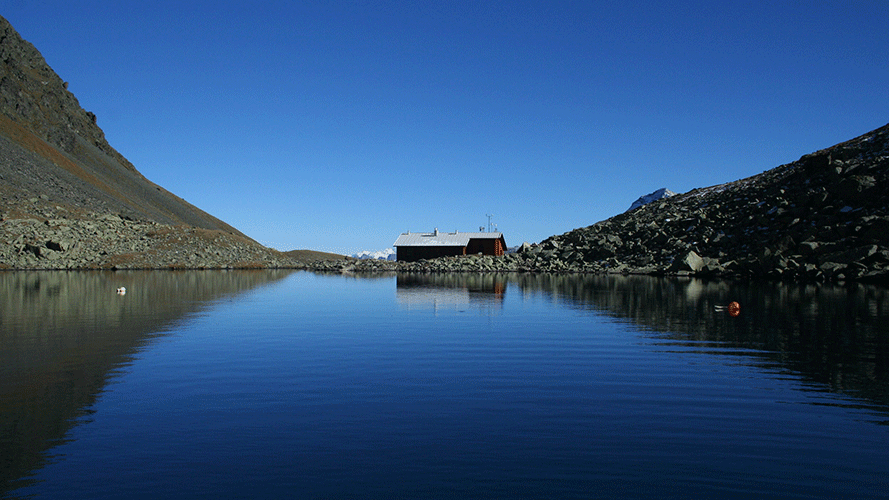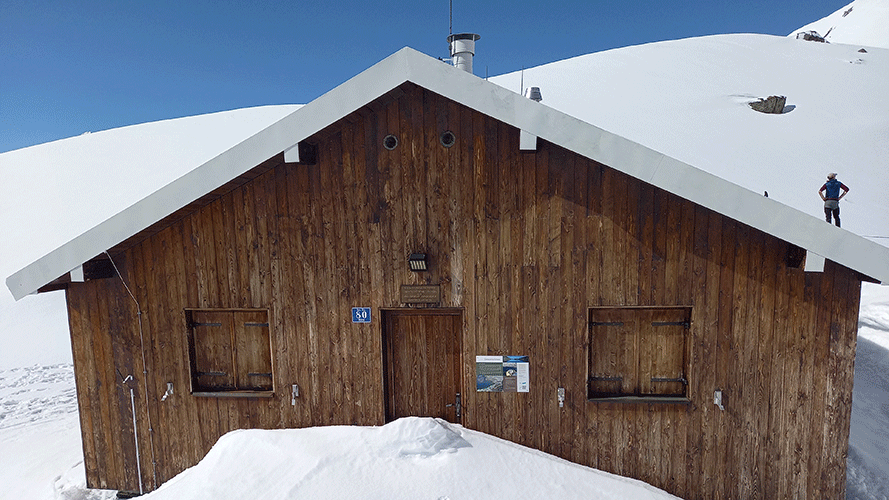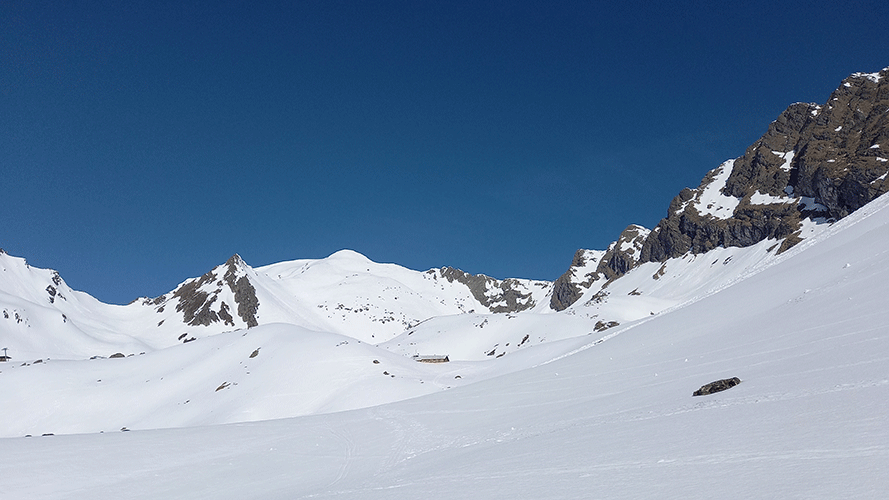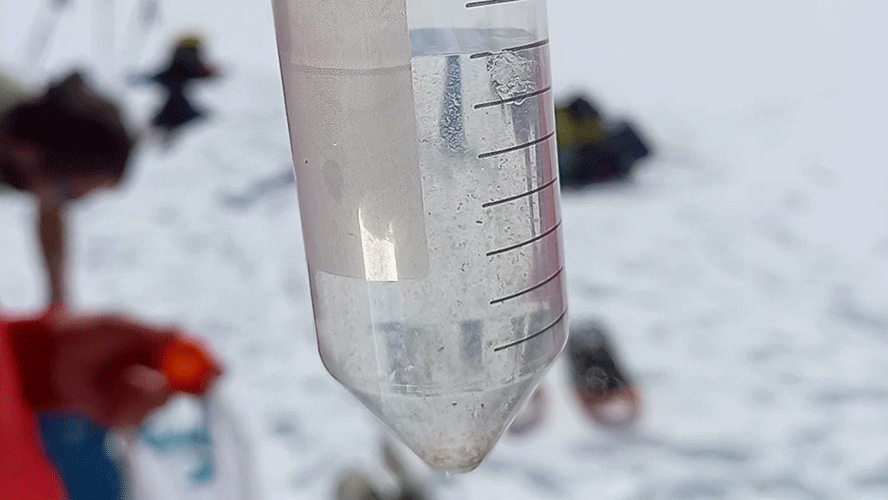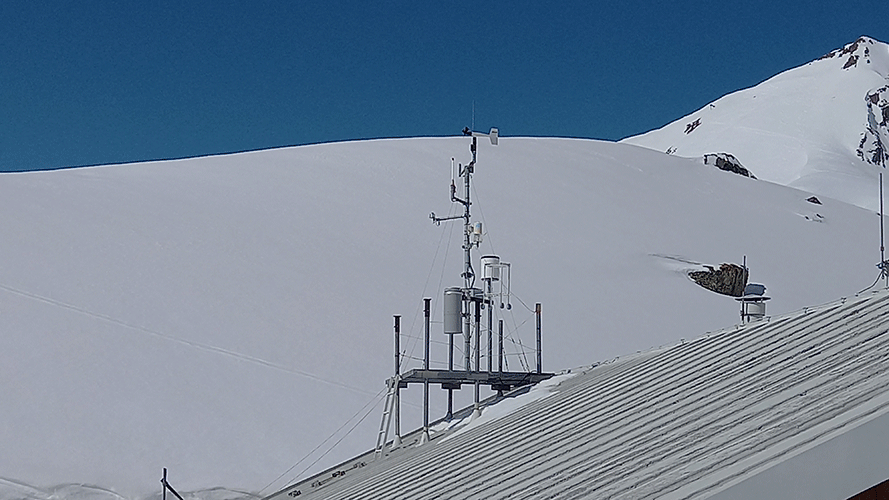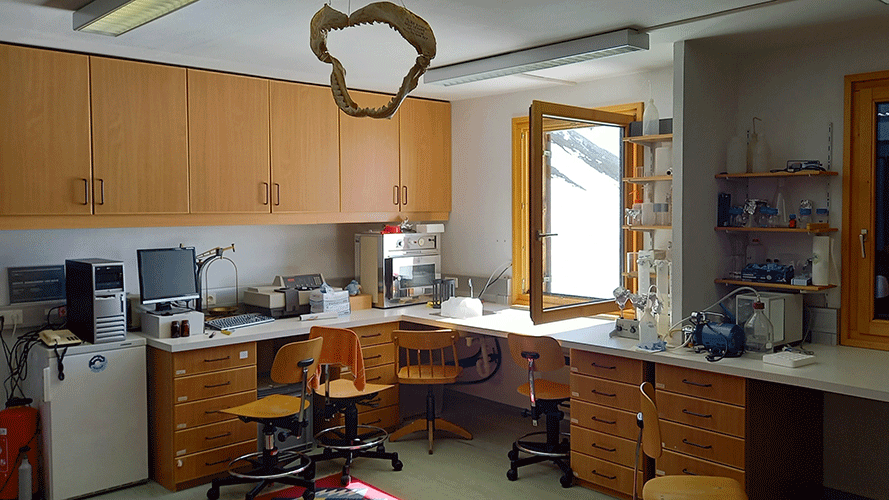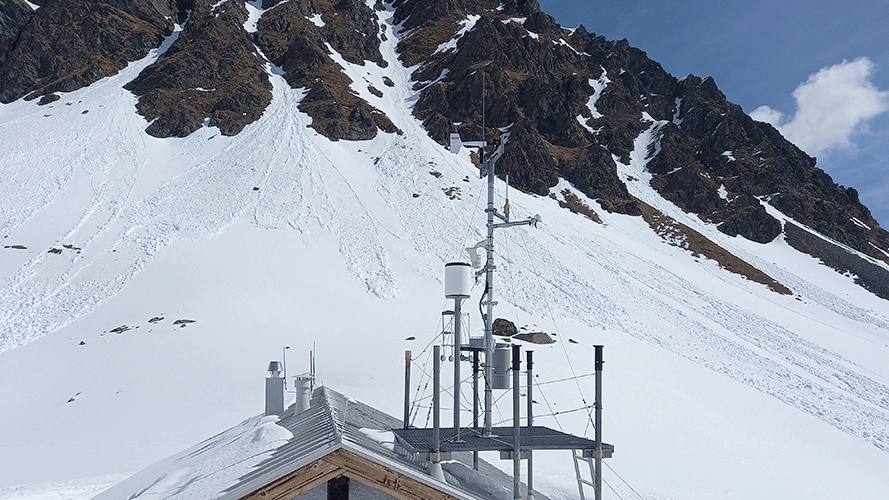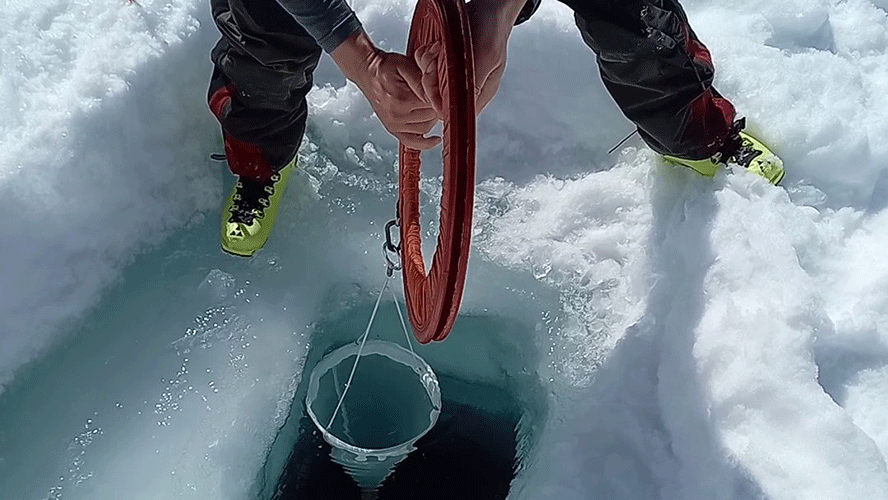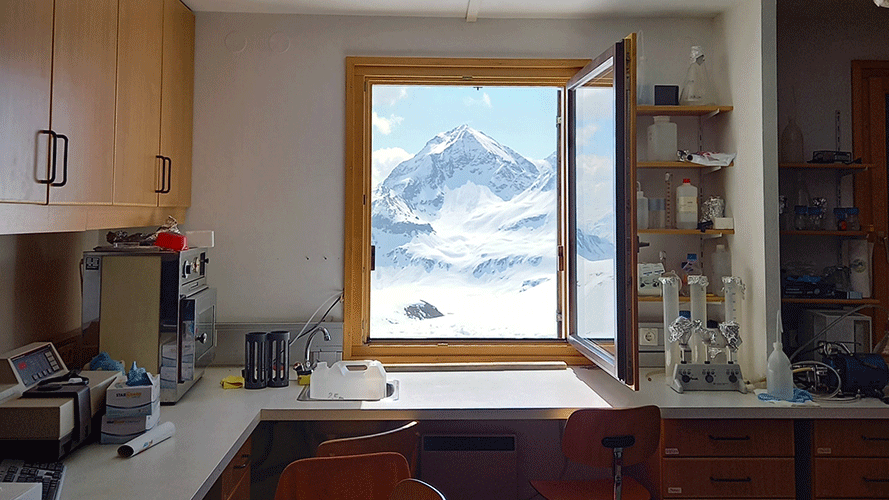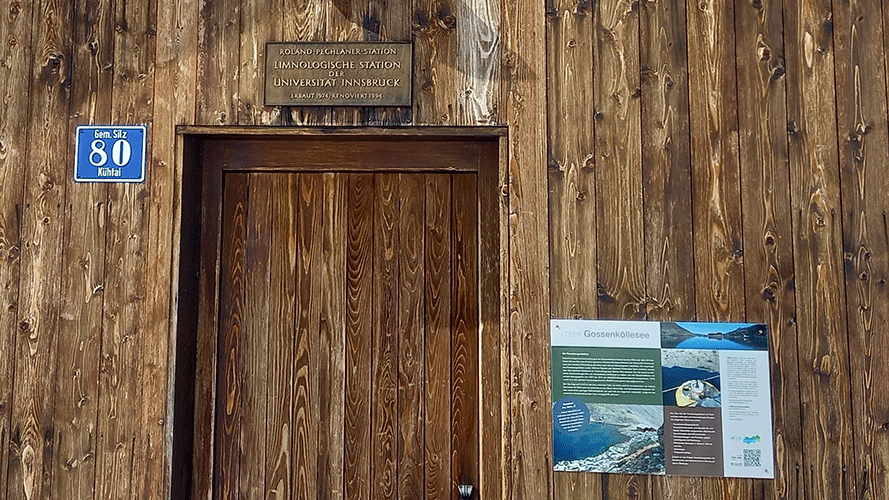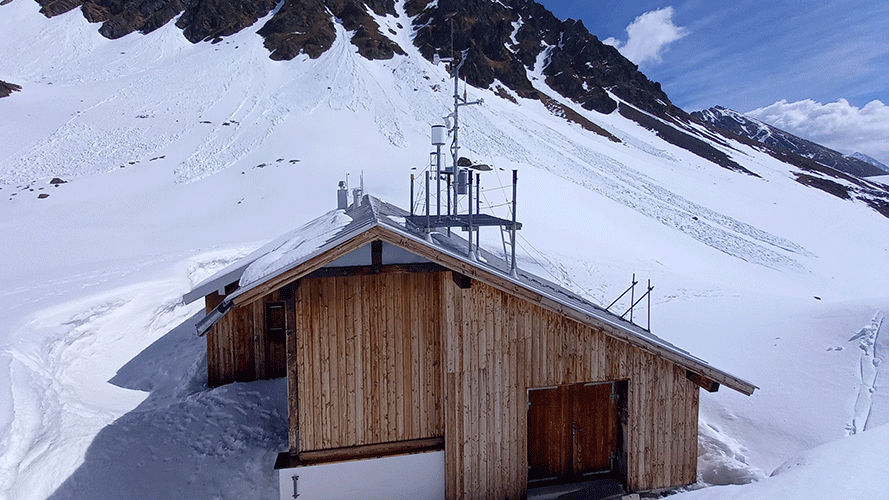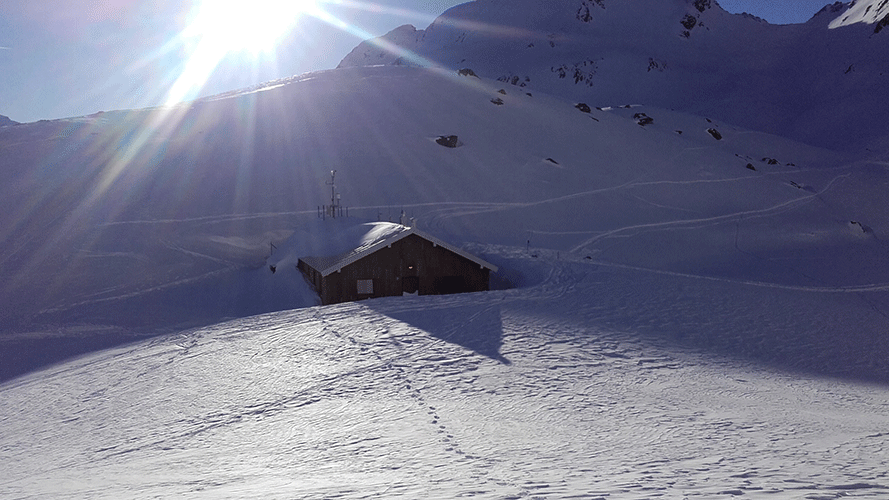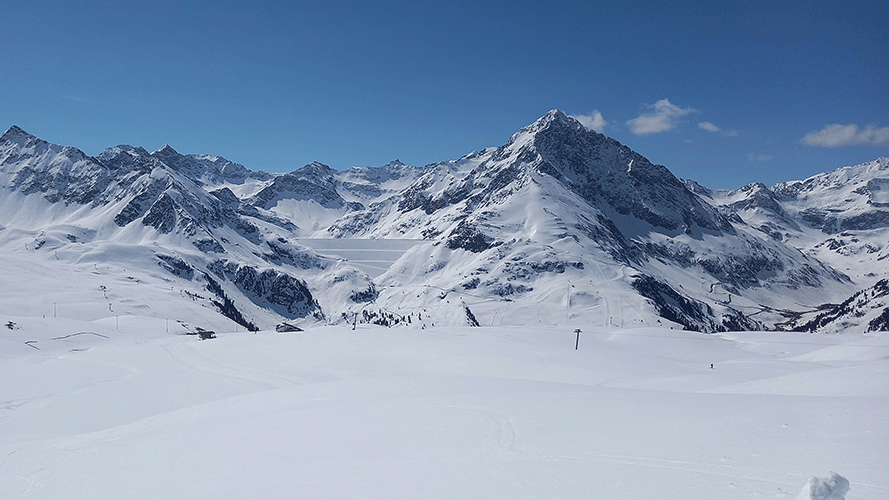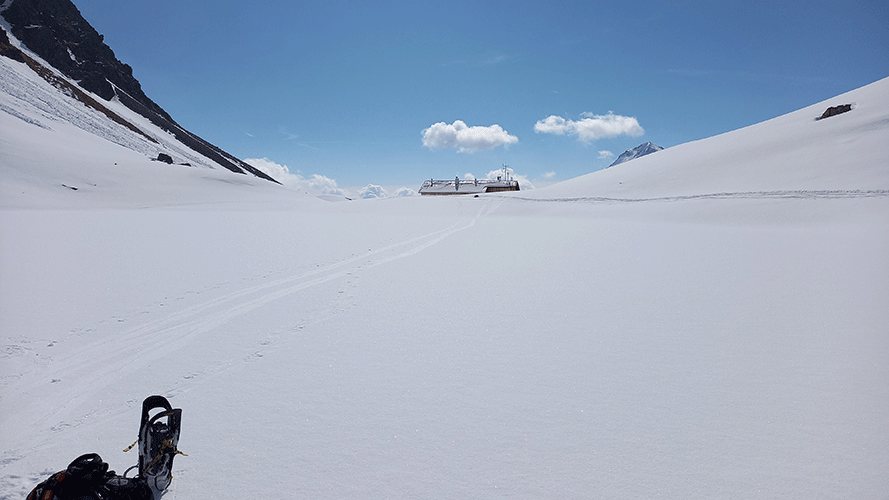Limnologische Forschungsstation Gossenköllesee
Der Gossenköllesee ist ein 1,6 ha großer Hochgebirgssee auf 2.416 m Seehöhe über dem Kühtaisattel in den Stubaier Alpen. An diesem See werden seit 1975 Daten erhoben, nachdem die ursprüngliche Forschungsstation am Finstertaler See einem Stauseeprojekt weichen musste. Von 1975 bis 2014 war der See als UNESCO Biosphärenreservat ausgewiesen.
Direkt am See befindet sich eine Forschungsstation, die 1994 grundlegend saniert wurde. Diese ist mit Strom und Wasser versorgt, sie enthält Laborplätze, Schlafmöglichkeit für 6 Personen, Küche, Sanitäranlagen, Sauna und einen Lagerraum. Am Dach befindet sich eine Wetterstation mit online Datenübertragung. Im See befindet sich eine Messboje, welche während der eisfreien Monate u.a. Temperatur, pH-Wert, Sauerstoffgehalt und Leitfähigkeit des Wassers misst. Zur weiteren Ausstattung gehört ein Boot und Taucherausrüstung für 2 Personen.
Aktuelle wissenschaftliche Untersuchungen am Gossenköllesee beschäftigen sich mit diversen wasserlebenden Organismengruppen wie Bakterien, Flagellaten und Copepoden. Auch atmosphärischer Eintrag in und dessen Einfluss auf das Gewässer werden untersucht. Jüngste Studien widmen sich dem Fund von Viren im See. Auf den Schneeflächen im Bereich des Sees werden verschiedenen Gruppen von Schneealgen untersucht.
Neben spezifischer Forschung werden an der Forschungsstation auch Monitoringprogramme betrieben. So ist sie ein LTER (Long-Term Ecosystem Research) Standort der LTSER Plattform Tyrolean Alps und LTER Austria und seit 2015 ein Standort von GLEON (Global Lake Ecological Observatory Network). Er ist außerdem ein Ausbildungsort für SchülerInnen und Studierende.
Weiterführende Links
- LTER Standort Gossenköllesee
- LTER Austria
- LTSER Tyrolean Alps
- GLEON Standort Gossenköllesee
- Institut für Ökologie/Research Unit Alpine Freshwater Ecology
Aktuelle Projekte
- LTER Monitoringprogramm (Long Term Ecological Research, Plattform Tyrolean Alps)
- GLEON (Global Lake Ecological Observatory Network, seit 2015)
Aktuelle Publikationen
- Gattringer, d. et al. (2023): A comparative approach to confirm antibiotic-resistant microbes in the cryosphere. Front. Microbiol. 14, https://doi.org/10.3389/fmicb.2023.1212378
- Schreder, S. et al. (2023): Changes in air temperature, but not in precipitation, determine long-term trends in water chemistry of high mountain lakes of the Alps with and without rock glacier influence. Science of the Total Environment 905: 167750, https://doi.org/10.1016/j.scitotenv.2023.167750
- Trumhová, K., Klimešová, V. & Pichrtová, M. (2022): Seasonal dynamics of the mats formed by conjugating algae of the genus Zygnema (Zygnematophyceae) in Austrian Alps. Microbial Ecology (2023) 86: 763–776, https://doi.org/10.1007/s00248-022-02105-6
- CHEKANOV, K. (2023): Diversity and Distribution of Carotenogenic Algae in Europe: A Review. Mar. Drugs, https://doi.org/10.3390/md21020108
- ROUX, S. et al. (2023): Updated Virophage Taxonomy and Distinction from Polinton-like Viruses. Biomolecules 13: 204. https://doi.org/10.3390/biom13020204
- ŠIMEK, K., MUKHERJEE, I., SZÖKE-NAGY, T. et al. (2023): Cryptic and ubiquitous aplastidic cryptophytes are key freshwater flagellated bacterivores. ISME J 17: 84–94, https://doi.org/10.1038/s41396-022-01326-4
- BURPEE, B.T., SAROS, J.E., NANUS, L., BARON, J., BRAHNEY, J., CHRISTIANSON, K.R., GANZ, T., HEARD, A., HUNDEY, B., KOINIG, K.A., KOPÁČEK, J., MOSER, K., NYDICK, K., OLEKSY, I., SADRO, S., SOMMARUGA, R., VINEBROOKE, R. & WILLIAMS, J. (2022): Identifying factors that affect mountain lake sensistivity to atmospheric nitrogen deposition across multiple scales. Water Research 209, 117883, https://doi.org/10.1016/j.watres.2021.117883
- DOKULIL, M. (2022): Impacts of Climate Warming on Alpine Lakes. Oxford Research Encyclopedia of Climate Science. https://doi.org/10.1093/acrefore/9780190228620.013.874
- EISENDLE, D., MEDGYESY, N., NIEDRIST, G.H., KAINZ, M.J. & SOMMARUGA, R. (2022): Diet composition and quality of a Salmo trutta (L.) population stocked in a high mountain lake since the Middle Ages. Science of the Total Environment, 853: 158415, https://doi.org/10.1016/j.scitotenv.2022.158415
- KOPEJTKA, K., TOMASCH, J., KAFTAN, D., GARDINER, A. T., BÍNA, D., GARDIAN, Z., BELLAS, C., DRÖGE, A., GEFFERS, R., SOMMARUGA, R. & KOBLÍŽEK, M. (2022): A bacterium from a mountain lake harvests light using both proton-pumping xanthorhodopsins and bacteriochlorophyll-based photosystems. Proceedings of the National Academy of Sciences, USA 119: 50, https://doi.org/10.1073/pnas.2211018119
- SCHMELLER, D.S., URBACH, D., BATES, K. et al. (2022): Scientists' warning of threats to mountains. Science of the Total Environment, 853: 158611, https://doi.org/10.1016/j.scitotenv.2022.158611
- TARTAROTTI, B., SOMMARUGA, R. & SAUL, N. (2022): Phenotypic and molecular responses of copepods to UV radiation stress in a clear vs. a glacially turbid lake. Freshwater Biology 67: 1456-1467, https://onlinelibrary.wiley.com/doi/10.1111/fwb.13953
- BELLAS C. M. & SOMMARUGA R. (2021): Polinton-like viruses are abundant in aquatic ecosystems. Microbiome 9, No. 13, https://doi.org/10.1186/s40168-020-00956-0
- FERNANDEZ P., VAN DROOGE B. L., ARELLANO L. & GRIMALT J. O. (2021): Atmospheric deposition of semivolatile organic pollutants in European high mountains: Sources, settling and chemical degradation. Science of The Total Environment, Volume 784, 147099, ISSN 0048-9697, https://doi.org/10.1016/j.scitotenv.2021.147099
- KOPEJTA K., ZENG Y., KAFTAN D., SELYANIN V., GARDIAN Z., TOMASCH J., SOMMARUGA R. & KOBLÍZEK M. (2021): Characterization of the Aerobic Anoxygenic Phototrophic Bacterium Sphingomonas sp. AAP5. Microorganisms 9: 768, https://doi.org/10.3390/microorganisms9040768
- WERNER N., ORFANOUDAKI M., HARTMANN A., GANZERA M. & SOMMARUGA R. (2021): Low temporal dynamics of mycosporine‐like amino acids in benthic cyanobacteria from an alpine lake. Freshwater Biology 6:1, 169–176, https://doi.org/10.1111/fwb.13627
- AGUILAR P. & SOMMARUGA R. (2020): The balance between deterministic and stochastic processes in structuring lake bacterioplankton community over time. Molecular Ecology 29:16, 3117 - 3130, https://doi.org/10.1111/mec.15538
- ELSER J.J., WU C.X., GONZALEZ A.L., SHAIN D.H., SMITH H.J., SOMMARUGA R., WILLIAMSON C.E., BRAHNEY J., HOTALING S., VANDERWALL J., YU J.L., AIZEN V., AIZEN E., BATTIN T.J., CAMASSA R., FENG X., JIANG H.C., LU L.X., QU J.J., REN Z., WEN J., WEN L.J., WOODS H.A., XIONG X., XU J., YU G.L., HARPER J.T. & SAROS J.E. (2020): Key rules of life and the fading cryosphere: impacts in alpine lakes and streams. Global Change Biology 26:12, 6644–6656, http://dx.doi.org/10.1111/gcb.15362
- HARTMANN A., GLASER K., HOLZINGER A., GANZERA M. & KARSTEN U. (2020): Klebsormidin A and B, two new UV-sunscreen compounds in green microalgal Interfilum and Klebsormidium species (Streptophyta) from terrestrial habitats. Front. Microbiol., 11(499), https://doi.org/10.3389/fmicb.2020.00499
- KOPEJTKA K., TOMASCH J., ZENG Y., SELYANIN V., DACHEV M., PIWOSZ K., TICHÝ M., BÍNA D., GARDIAN Z., BUNK B., BRINKMANN H., GEFFERS R., SOMMARUGA R. & KOBLIZEK M. (2020): Simultaneous presence of bacteriochlorophyll and xanthorhodopsin genes in a freshwater bacterium. mSystems 5/6, No. e01044-20, DOI: 10.1128/mSystems.01044-20
- ZIMMERMANN-TIMM H., SHAH D. N. & TACHAMO SHAH R. D. (2020): Hochgebirgsgewässer im Wandel. In LOZÁN J. L., BRECKLE S.-W. GRAßL H., KASANG D., PAUL F. & SCHICKHOFF U. (eds.): Warnsignal Klima: Hochgebirge im Wandel: 187–193, doi:10.25592/warnsignal-klima.hochgebirge-im-wandel.28.
Weiter Publikationen finden Sie im Literaturverzeichnis.
